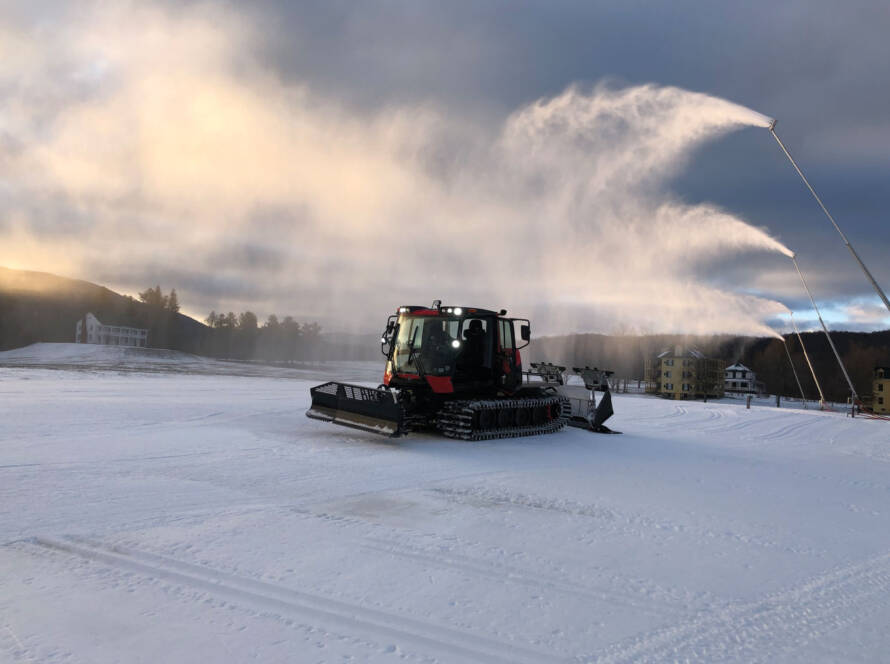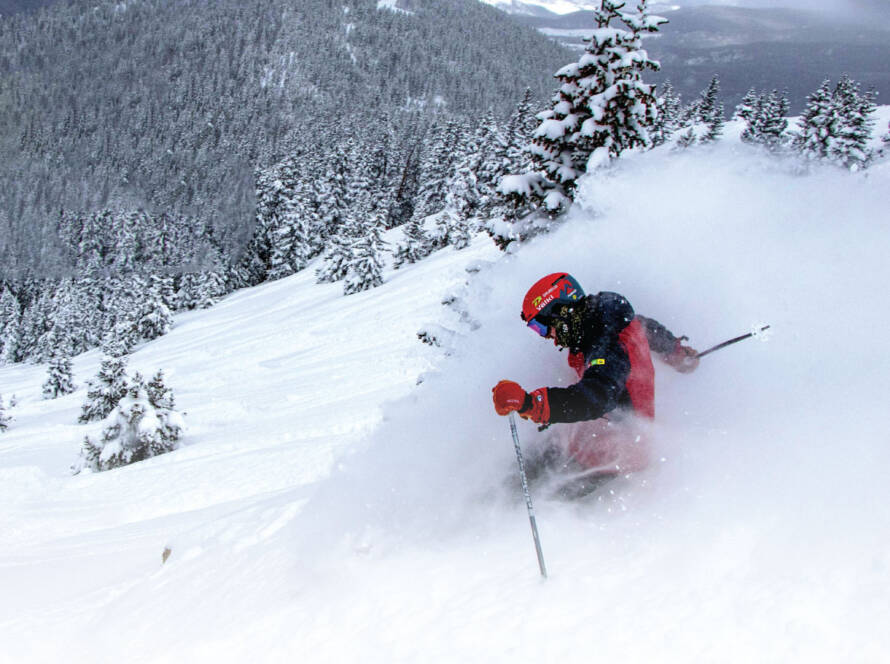A southern California-based entrepreneur is breathing new life into old snowboards.
Roberto Smith is the founder and CEO of Alegre Boards. His Hawthorne, Calif.-based company upcycles used and retired snowboards into one-of-a-kind skateboards that turn heads and spark curiosity wherever they go.
Smith first thought of repurposing snowboards about 15 years ago when he found an old one gathering dust in his garage. Rather than simply dumping it at a landfill site, he began thinking of alternate uses for the board.
“One of my hobbies is taking things that have kind of passed their lifespan and either repair them, or redo them and figure out a new way of using them; like repurposing an old wagon into a coffee table, where you kind of flip something on its head and it makes you look at it again in a new way,” he said.
“I had this old snowboard in the garage that had been sitting there rusting away. I thought, ‘I think I can turn that into a skateboard.’ I sort of jumped on the project with what I had on hand or what I could get locally without really knowing what I was doing. It worked out pretty well even through all the mistakes.”
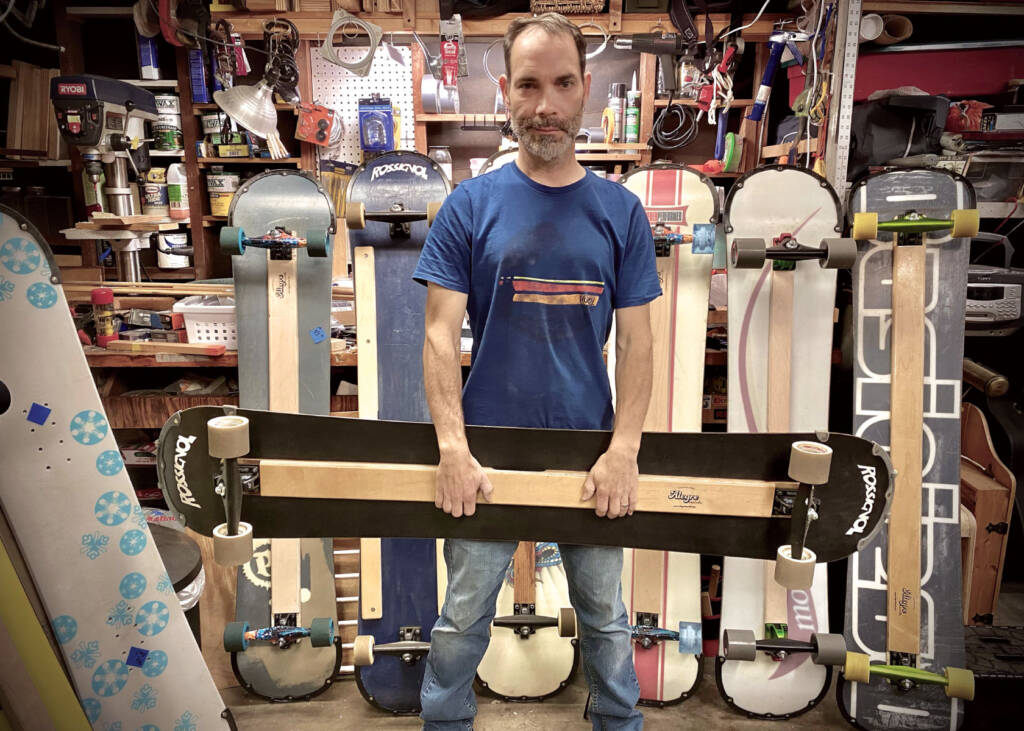
Things worked out so well that people began approaching Smith about his unusual-looking board whenever he would take it for a cruise along the boardwalk at a neighborhood beach. Family and friends then started asking him to build them one of their own upcycled skateboards.
By 2017, there was so much interest in the repurposed boards that Smith founded Alegre, a Spanish word meaning “happy” or “cheerful,” which also happens to be his middle name. The company has produced about two dozen of its custom-made skateboards for customers in California and other parts of the world, including Panama.
The first step in the conversion process is acquiring the necessary raw materials: used snowboards. That’s a relatively easy task for Smith since many old boards can no longer be used at a nearby mountain ski area like Big Bear Mountain Resort or Lake Arrowhead, or whose owners simply no longer use them.
“There are a ton of boards out there just rotting away in garages,” said Smith. “At some of the festivals I go to, it’s a common story where people come up and say, ‘I’ve got four of these in my garage somewhere. I’m happy to give them to you.’ A few days later, I’ll find a couple of snowboards sitting on my doorstep.”
The next step is to remove all of the snowboard bindings and any other surface coverings, such as stomp pads and stickers, to reveal the board’s original look.
“I’ll clean them up … and that usually reveals this awesome graphic that’s been hiding under all that hardware that you have to put on the board to use it as a snowboard,” Smith said.
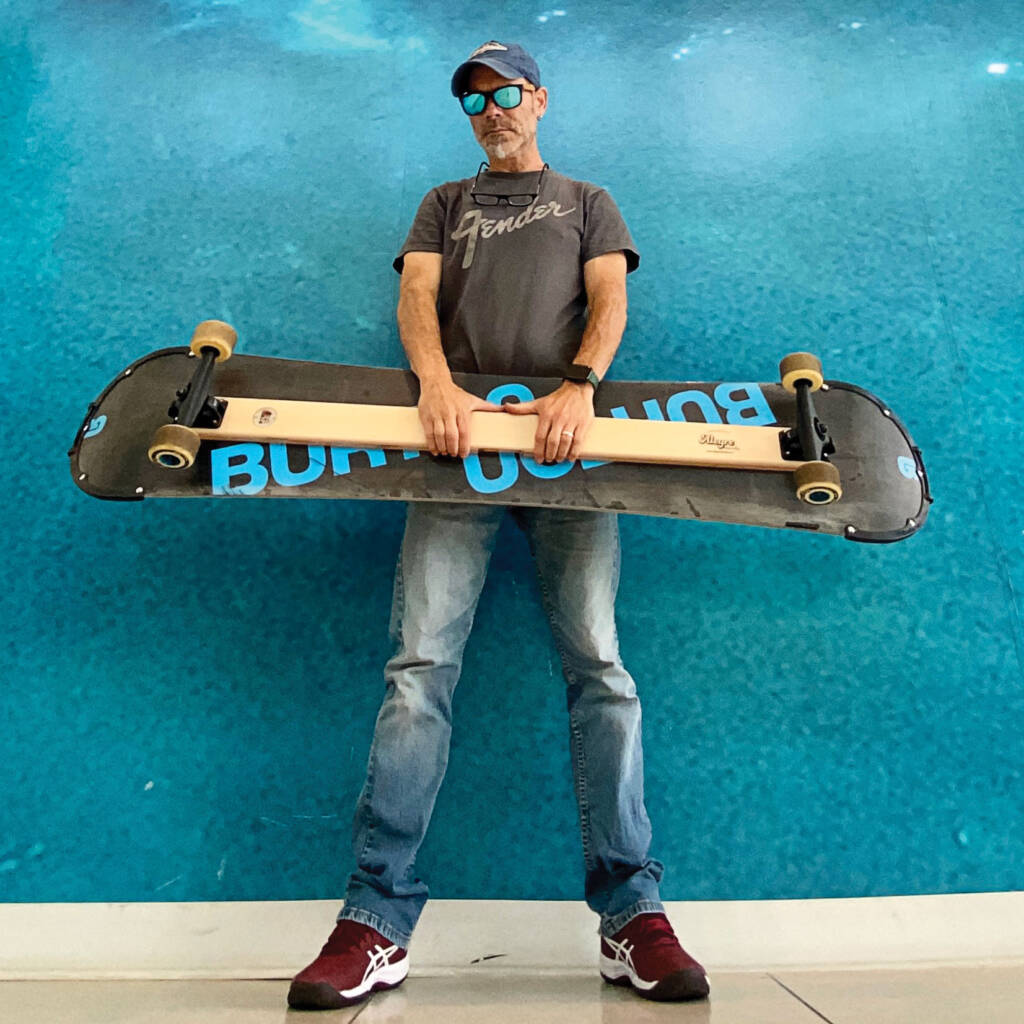
“Each board kind of has its own story. It had a life and now it has a new life. There’s something cool about it.”
Roberto Smith, Alegre Boards
After that, he grinds down the sharp metal edge around the board’s perimeter until it has a smooth, polished look. Next, a thin layer of locally sourced wood is applied to the bottom of the board to provide added stability and a unique look, a process Smith has patented. T-shaped metal pieces known as trucks, which hold the board’s wheels in place, are then attached to the base of the board.
Finally, a small handle is formed at the base of the board to make it easier to carry and a bottle opener is attached, just in case one is ever required. “That usually gets a laugh out of people. It’s like, ‘Aw, cool,’” he said.
The process generally takes only a couple of hours per board and most of the original board is retained. Smith has some parts specially manufactured for his upcycled product, which includes bumpers for the nose and tail sections to prevent damage to the board if it hits a wall or curb.
Most of the finished boards measure between 55 and 65 inches in length. A self-professed perfectionist, Smith takes each board out for a test ride to ensure it functions properly before delivering it to a customer. Smith says his skateboards have a definite recycled look to them, including scratches from the bindings and whatever happened to them while in use on a mountain.
“Each board kind of has its own story,” he said. “It had a life and now it has a new life. There’s something cool about it. It kind of turns things on their head and makes people look at something they might have looked past before.”
Most of the boards Alegre has sold have been the result of online sales or visits to festivals, such as Fiesta Hermosa, where people can check out the products firsthand.
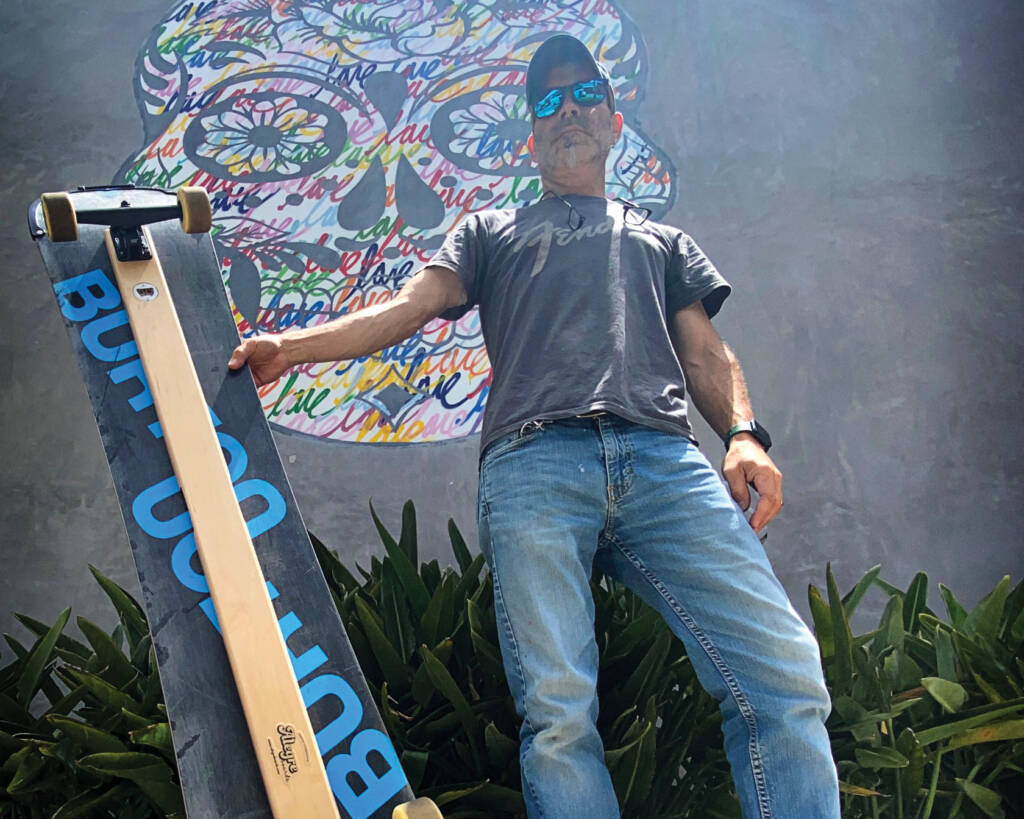
“The amount of attention the board gets any time I’m using it is just amazing. It’s just turning heads all the time,” he said. “It’s such an interesting grab bag of people who are interested. Even people who don’t skate will come up to me and ask about them because it’s such an attention-grabber.”
While Alegre skateboards may not look like conventional skateboards, they ride like a traditional longboard.
“The way I use it is just for a good, long ride. You just go cruising for a good, comfortable ride,” said Smith. “I don’t do any tricks with it. The board wasn’t conceived with the idea of doing tricks on it, but board owners can, of course, decide what kind of activities they’d like to do with their boards.”
Surprisingly, many of Smith’s customers have never used a skateboard before purchasing one of his boards. “My first few customers were people who had never skated before. They were wanting to learn or were just charmed by this crazy contraption,” he said.
“What we’ve found is that it’s easier to skate on a longboard than it is on your traditional smaller boards. [Longboards] are more stable, they’re less likely to go shooting out from under you. Of course, they’re still skateboards and still carry that moving danger as with any kind of skateboard. But they’re definitely easier to learn on than smaller boards.”
Alegre Boards is a passion project for Smith who is a full-time digital artist of photography and visual effects for the film industry. He isn’t in a rush to grow the company too quickly. Still, he says he’s open to talking with some of the big snowboard companies about potential opportunities to bring more old boards back to life.
“I find it disheartening to see these great-looking boards that still can be used for something, even if they can’t be used on the mountain, being abandoned. I just find turning them into use for another activity to be very captivating. You get out and skate around, and meet up with other people. It’s like you are giving (the board) a new life, and it’s giving you a bit of a new life, too,” Smith said.

